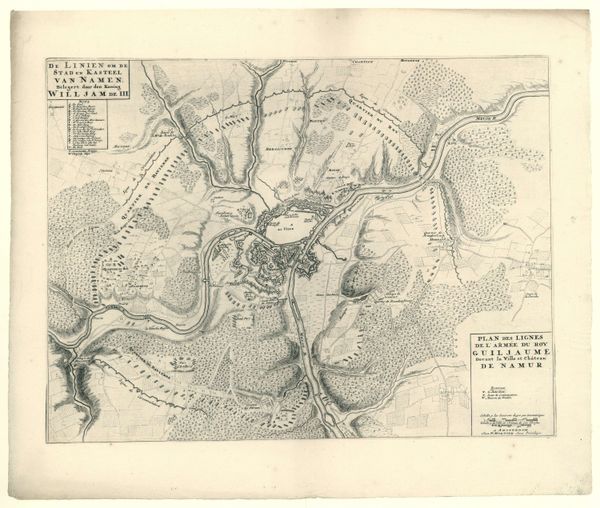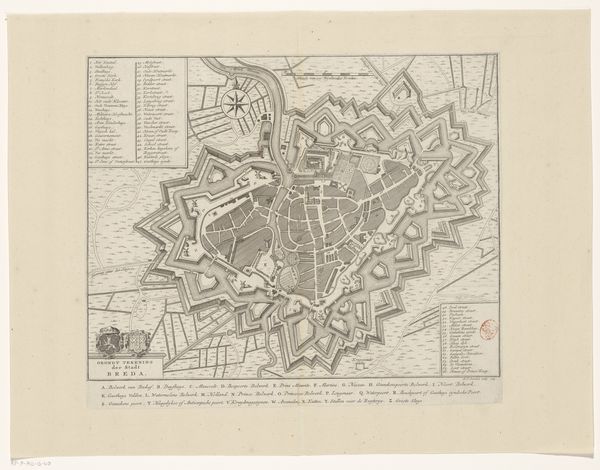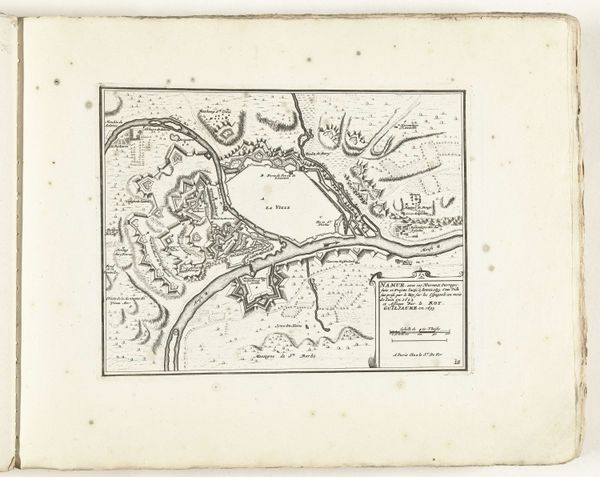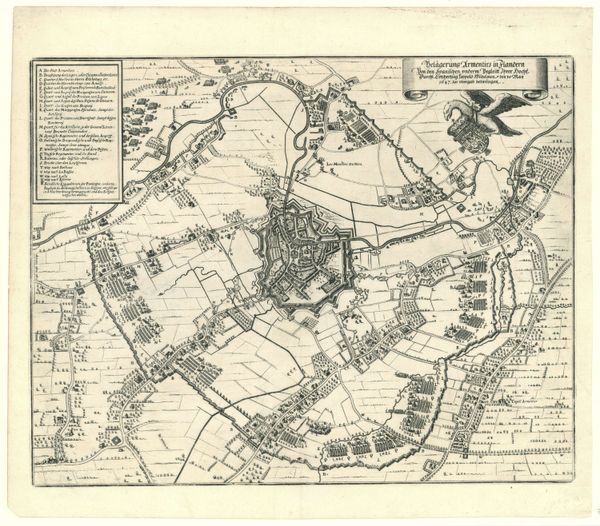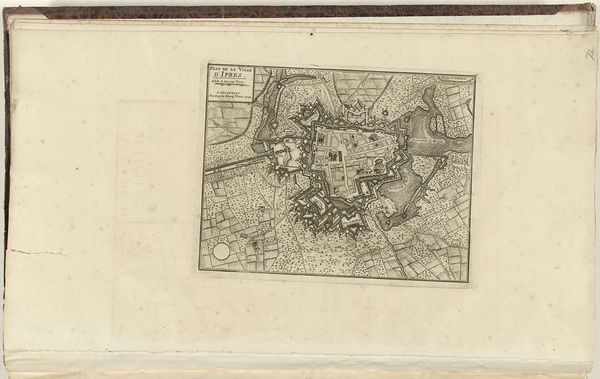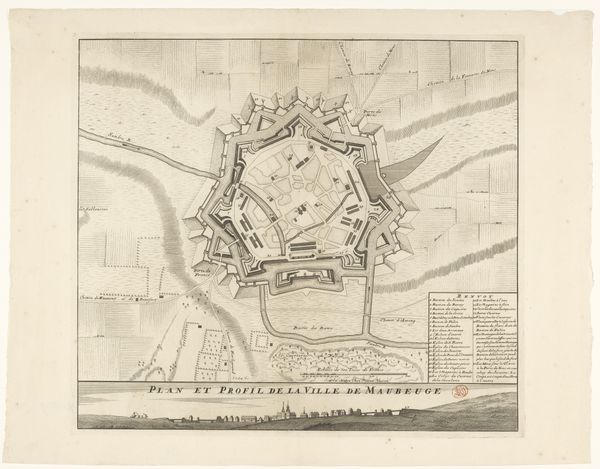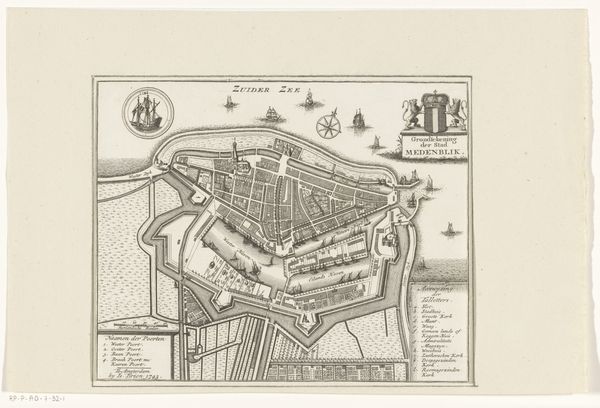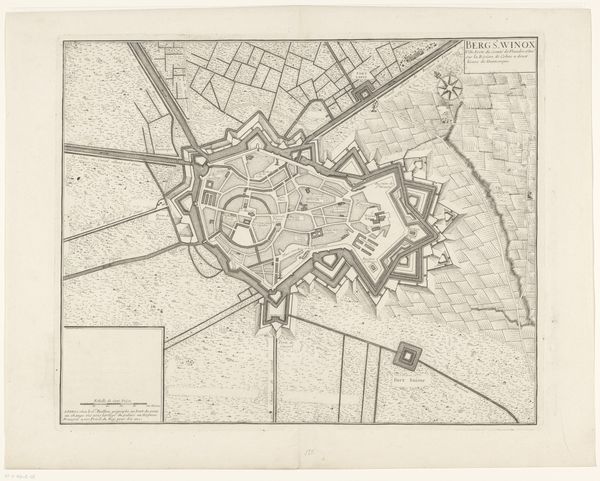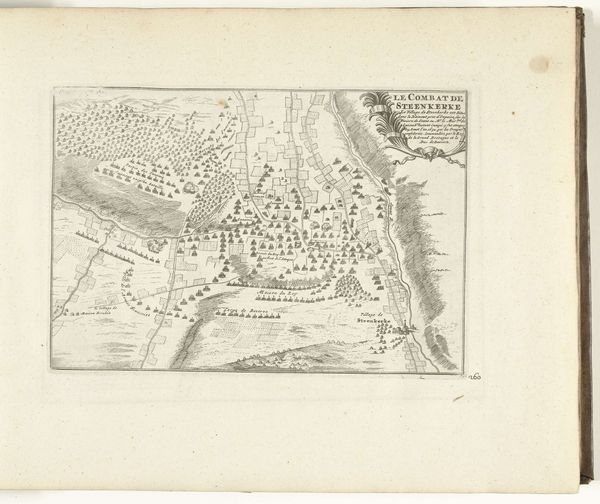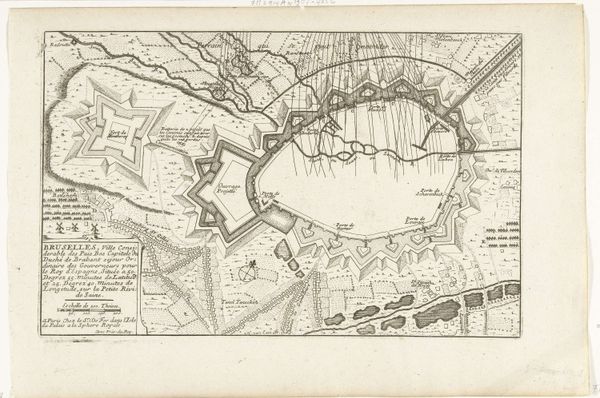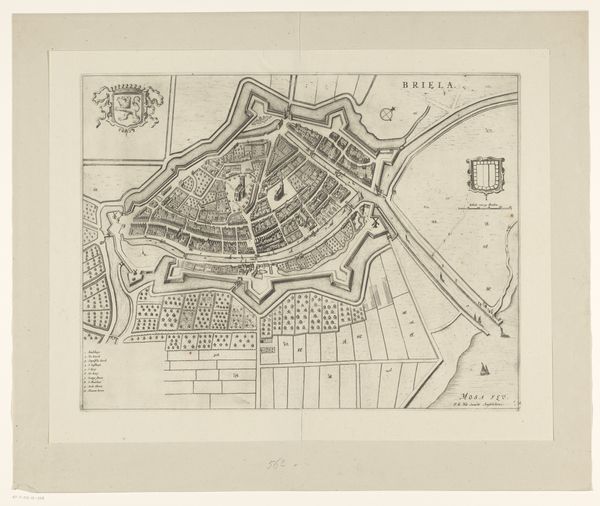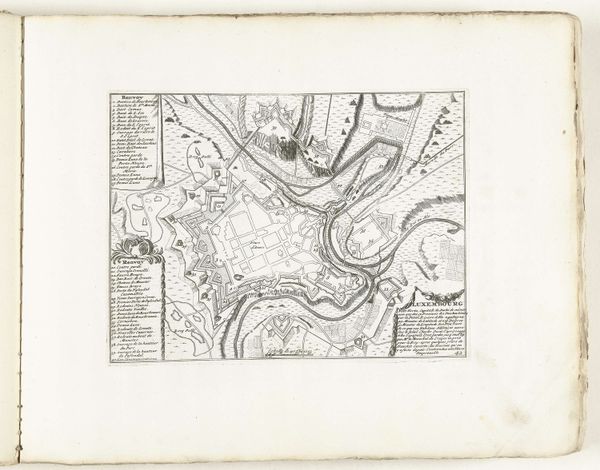
drawing, ink, pen
#
drawing
#
baroque
#
pen illustration
#
old engraving style
#
landscape
#
ink
#
geometric
#
pen work
#
pen
#
history-painting
Dimensions: height 386 mm, width 447 mm
Copyright: Rijks Museum: Open Domain
Editor: This drawing, "Beleg van Bouchain, 1711" by B. van Zijl, rendered in pen and ink, depicts the siege of a town. The geometric precision of the lines is striking, almost like an architectural blueprint. What can you tell me about the formal aspects of this piece? Curator: The most arresting element here is the strategic deployment of line. Notice how the lines, varying in weight and direction, define the forms. Thick lines demarcate the boundaries of fortifications, while finer lines delineate topographical features. The deliberate organization of these lines creates a complex yet legible spatial structure. Do you observe the geometric patterns and their effect? Editor: Yes, the repetition of angular shapes – the fortifications themselves, for example – creates a sense of order and control. It’s very precise. It almost feels…clinical. Curator: Indeed. The artist’s formal vocabulary – the line work, the deployment of positive and negative space – conveys a detached observation, a focus on the tactical rather than the human drama. Consider how the textures are created purely through variations in line density, lacking any painterly softening. It is, at its core, a cartographic study. Editor: So, the form emphasizes strategy and planning over emotion. The artist isn't attempting to evoke feeling so much as to record and communicate information. Curator: Precisely. And by focusing on these formal choices, we can begin to understand how the artwork functions as a carefully constructed system of representation, communicating the event of the siege in a detached, almost scientific manner. Editor: I see the distinction now. By focusing on the geometric forms, textures, and precision in linework, it reframes how we approach an art piece such as this. Thanks for shedding light on that. Curator: My pleasure. Close attention to the internal logic of the visual components yields, time and again, an appreciation of its form and meaning.
Comments
No comments
Be the first to comment and join the conversation on the ultimate creative platform.
